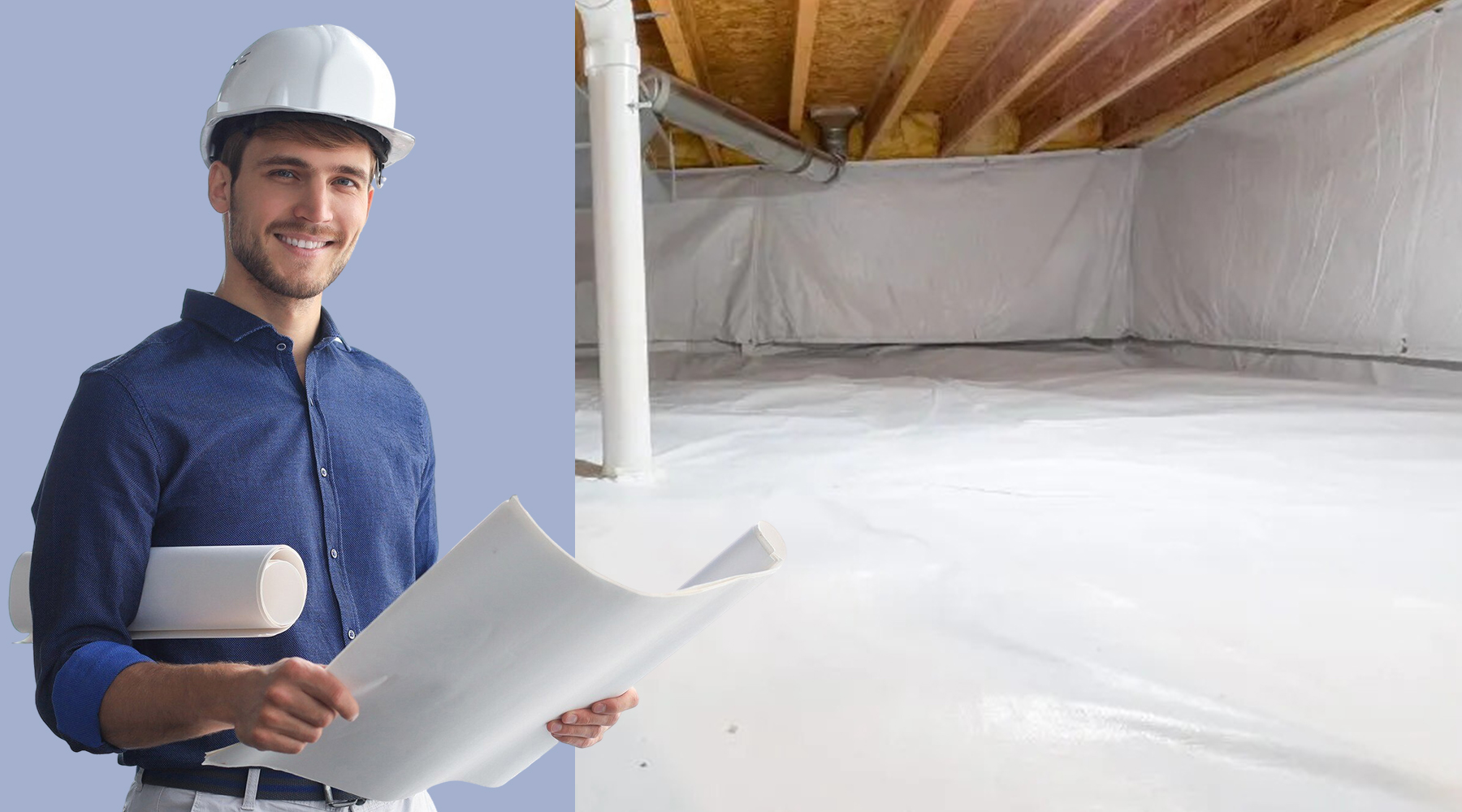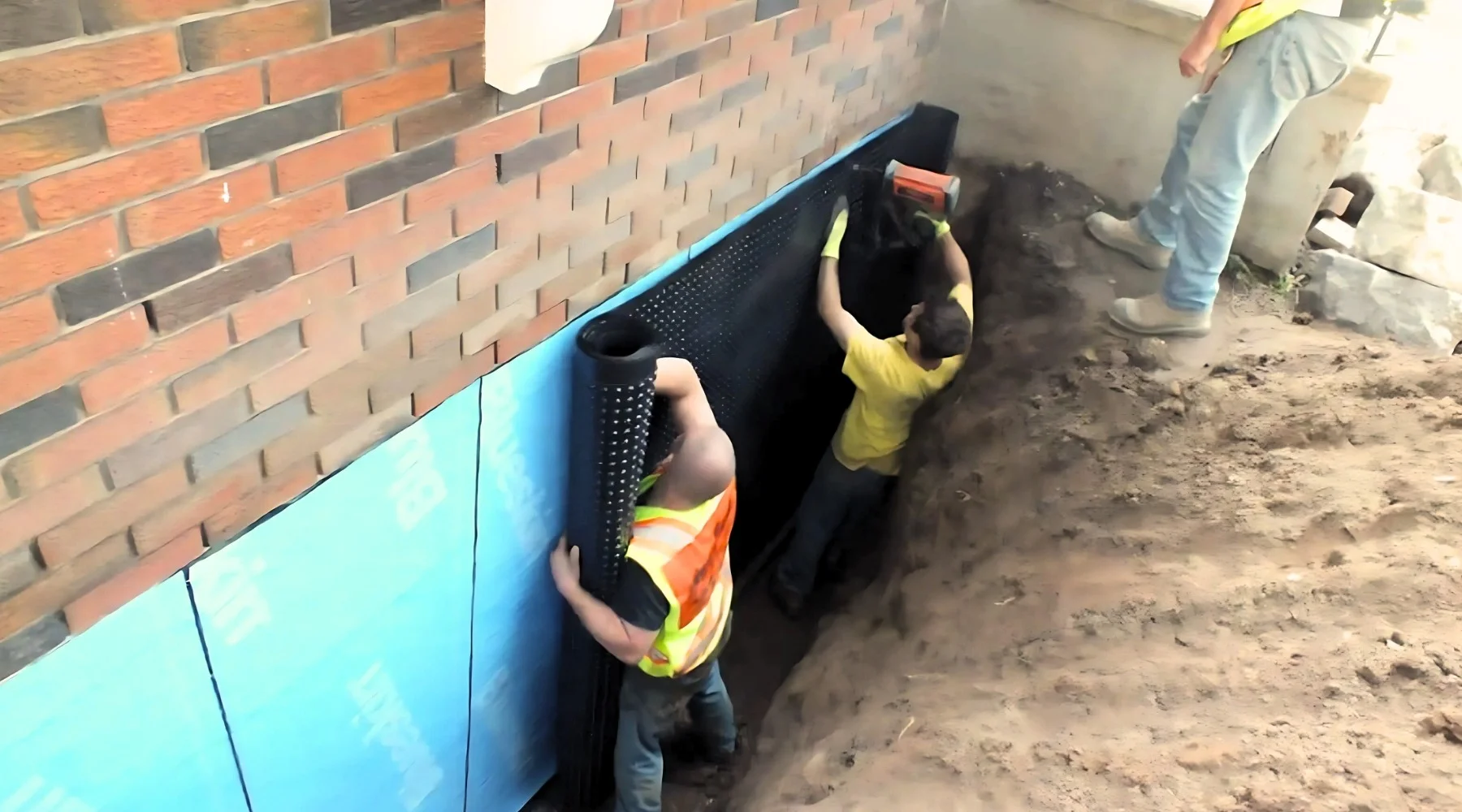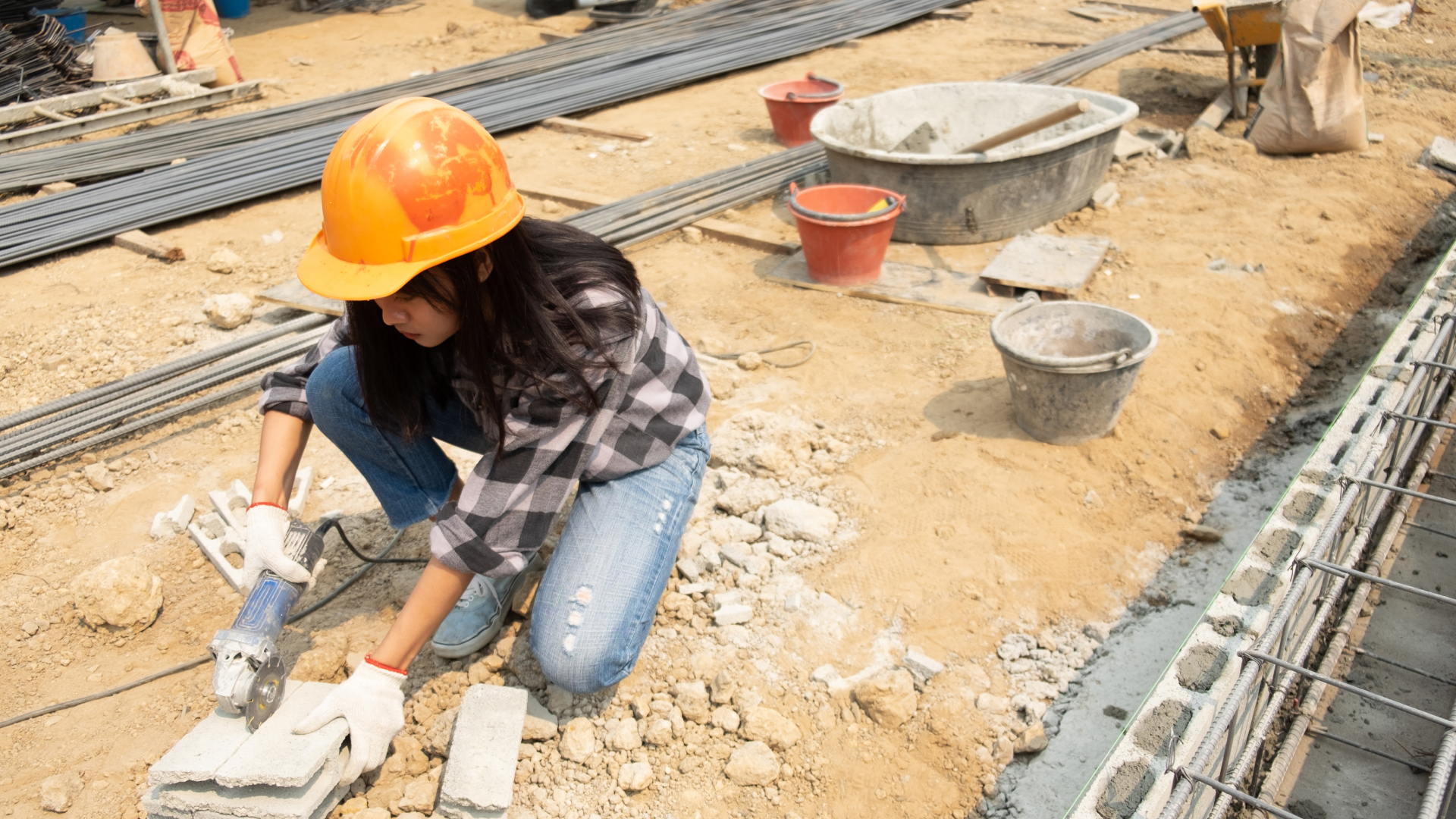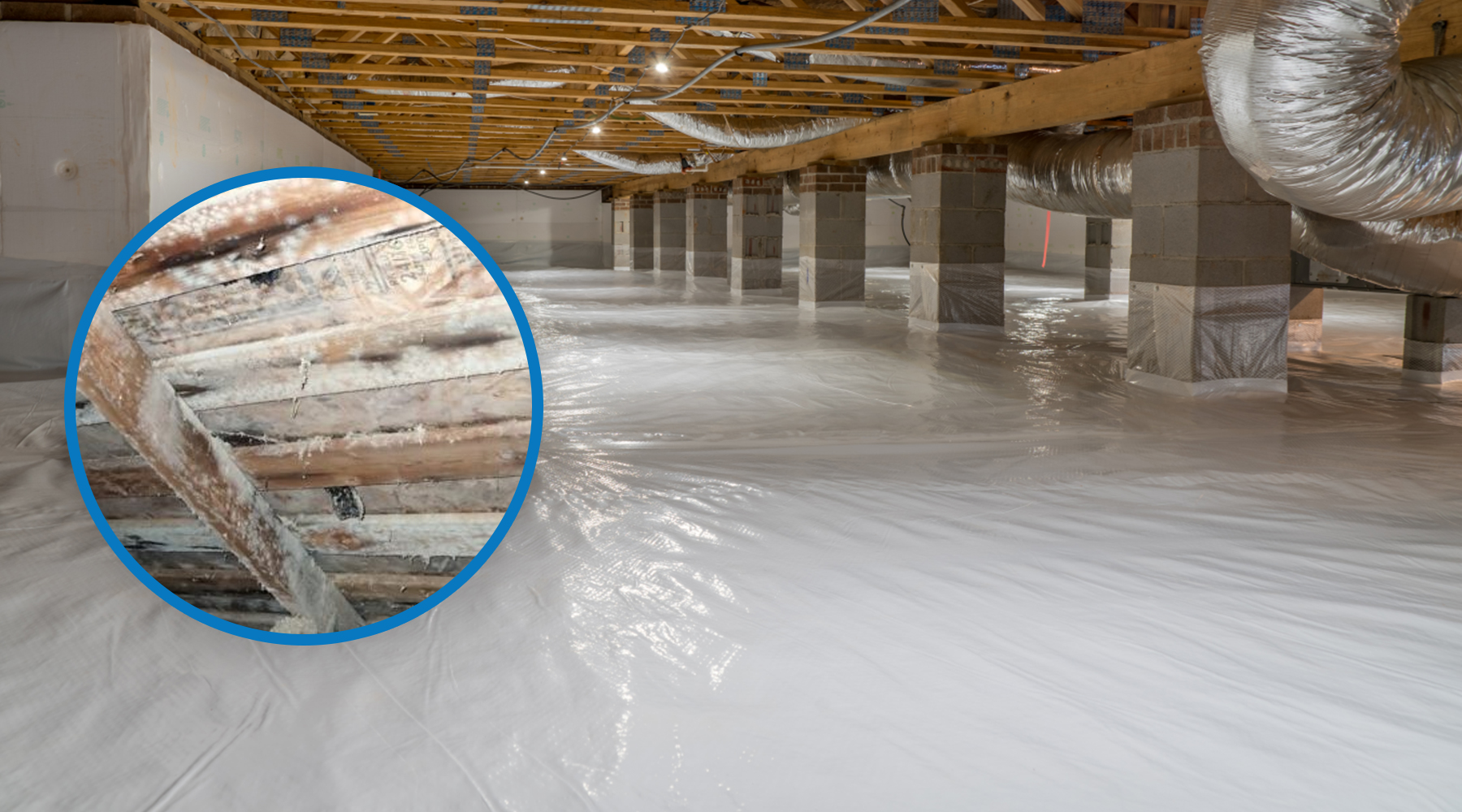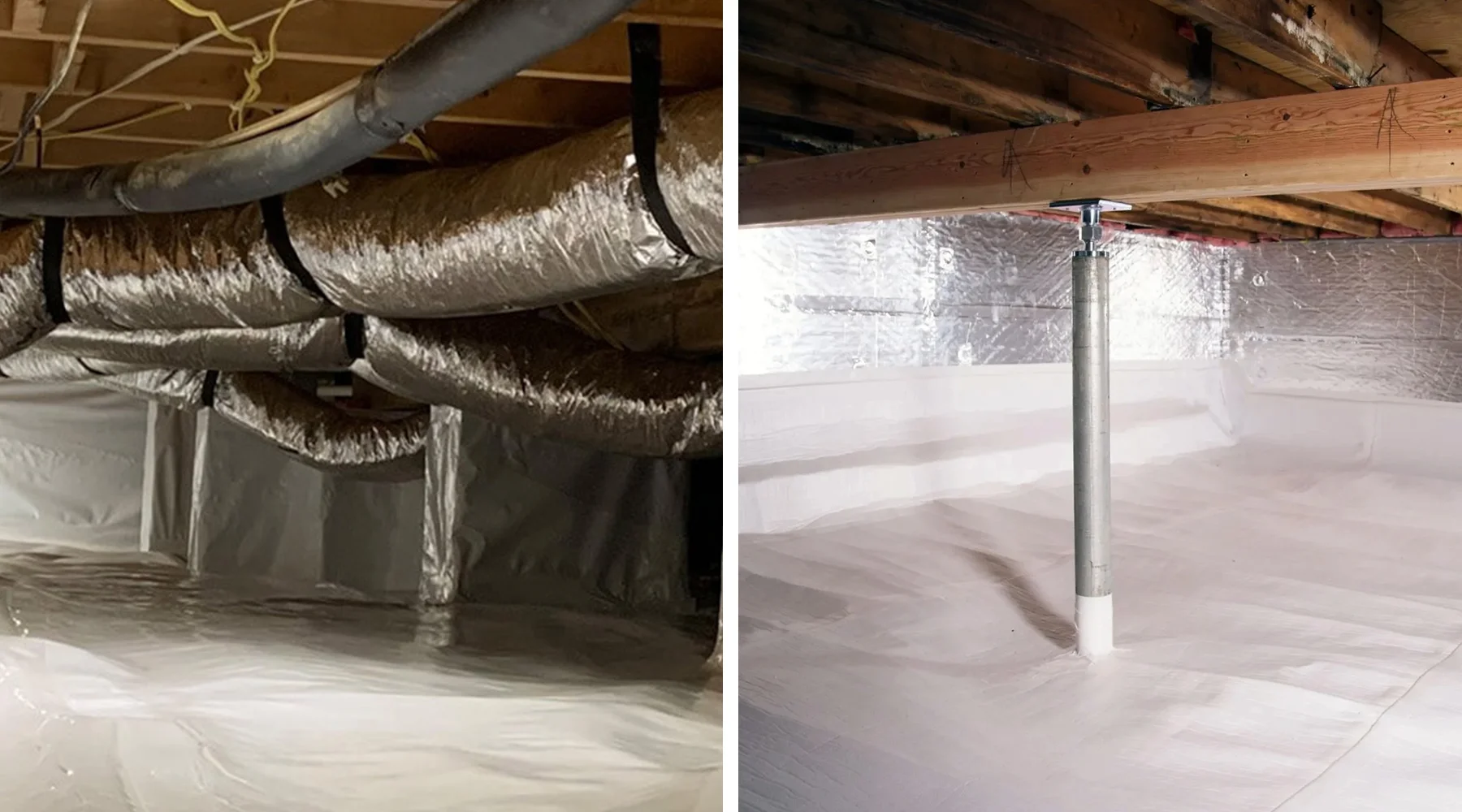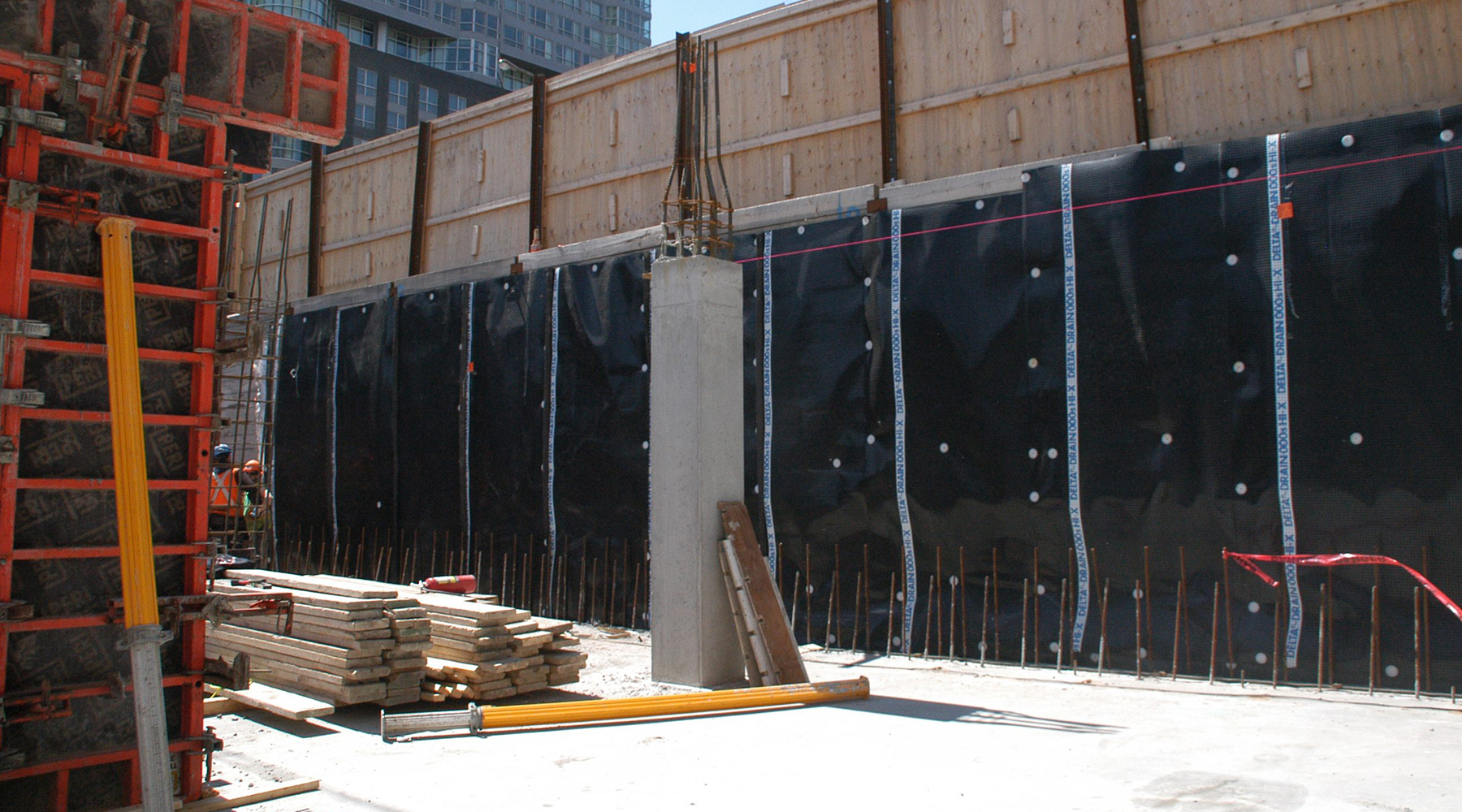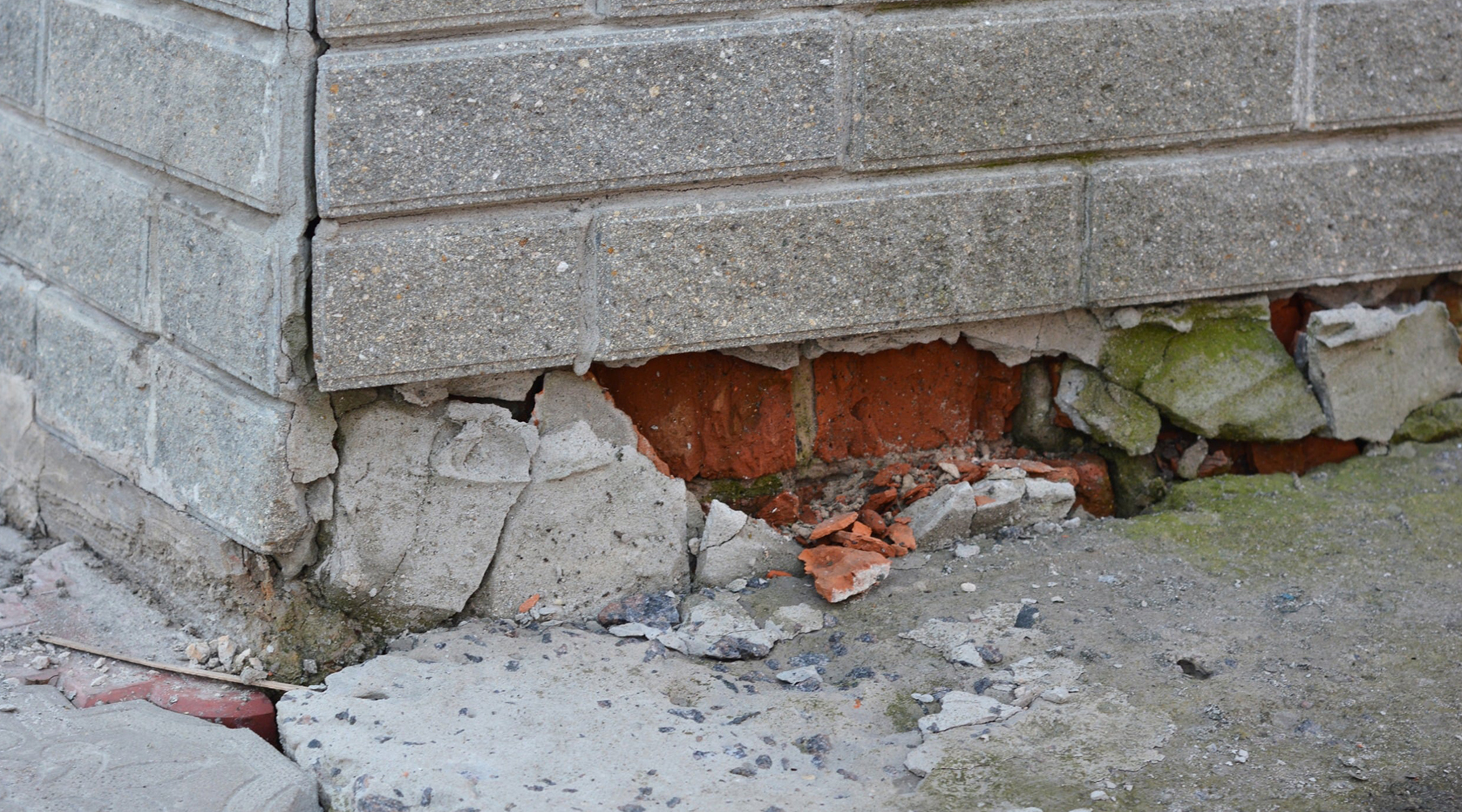Moisture in the basement isn’t just a nuisance — it can lead to structural damage, mold, and long-term repair costs. Whether you’re dealing with damp walls or a full-blown flood, choosing the right basement waterproofing method is key to protecting your home or commercial building. The two main approaches are interior and exterior waterproofing, and each has its own purpose.
Let’s break them down, side by side.
Understanding the Importance of Basement Waterproofing
Water can find its way into a basement through cracks, porous walls, or even rising groundwater. Without a proper system in place, you risk more than just wet floors.
Why Basement Waterproofing Matters
- Protects your foundation from weakening
- Prevents mold and mildew growth
- Preserves home value
- Reduces humidity and improves air quality
- Prevents water damage to stored items or finished areas
Common Causes of Water Infiltration
- Poor drainage or grading around the home
- Cracked foundation walls
- High groundwater table
- Blocked gutters or short downspouts
- Hydrostatic pressure pushing water through walls or floor
Signs Your Basement Has a Moisture Problem
- Damp or musty smell
- Water stains on walls or floors
- Mold or mildew on surfaces
- Efflorescence (white powder) on walls
- Peeling paint or bubbling drywall
Overview of Waterproofing Methods
- Coating Waterproofing: – Applying a protective layer of material, such as paint or sealant, to a structure’s surface to prevent water penetration.
- Membrane Waterproofing: – Using prefabricated sheets (like bitumen, PVC, or EPDM) or liquid-applied membranes to create a continuous waterproof barrier.
- Cementitious Waterproofing: – Applying a cement-based coating to create a waterproof barrier, suitable for basements and below-ground areas.
- Integral Waterproofing: – Incorporating waterproofing admixtures into the concrete mix during construction.
- Drainage Systems: – Installing systems like weeping tiles and perimeter drains to divert groundwater away from a structure.
- Sealant Waterproofing: – Using sealants to block water penetration in various areas, including bathrooms and basements.
What Is Interior Basement Waterproofing?
Interior basement waterproofing manages water that’s already made its way inside. It doesn’t stop water at the source — instead, it redirects it safely away from the basement using interior systems.
What Is Exterior Basement Waterproofing?
Exterior waterproofing prevents water from ever reaching your basement walls. It involves excavation, sealing the foundation, and setting up drainage solutions around the structure.
Interior Basement Waterproofing Explained
Interior basement waterproofing is a method of addressing moisture issues by treating the inside surfaces of the basement walls and floor with waterproof materials. It’s a more affordable and less disruptive option than exterior waterproofing, especially when access to the exterior is limited. Interior waterproofing primarily focuses on managing water that has already entered the basement, such as from minor leaks or condensation, and is generally more effective for addressing these specific types of issues Some of the Common Interior Waterproofing Solutions includes.
Sealants and Coatings
Used to seal porous walls like concrete blocks. Products like Drylok or crystalline-based sealants bond with the surface to help reduce moisture seepage. Useful for waterproofing concrete block walls inside.
Interior Drainage Systems
A basement interior drainage system involves placing a perforated drain tile along the edge of the basement floor. This captures incoming water and moves it to a sump pump.
Sump Pumps
These remove collected water from the drainage system and pump it safely outside the home.
Vapor Barriers
Plastic or foil sheeting placed on walls or floors to reduce moisture transfer.
Dehumidifiers
Help control humidity and prevent mold growth — a useful supplement, not a standalone fix.
Pros of Interior Waterproofing
- More affordable than external solutions
- Quick to install
- Minimal disturbance to landscaping
- Effective for managing minor water entry or condensation
Cons of Interior Waterproofing
- Doesn’t stop water from entering the foundation
- Doesn’t relieve hydrostatic pressure
- Not ideal for severe leaks or flooding
Best Use Cases for Interior Waterproofing
- Finished basements
- Homes with minor seepage or dampness
- Budget-conscious solutions
- Condensation-related issues
Exterior Basement Waterproofing Explained
Exterior basement waterproofing is a comprehensive and proactive approach to preventing water from entering your basement. It focuses on addressing water issues at their source, outside your home’s foundation.
Common Exterior Waterproofing Solutions
Exterior basement waterproofing relies on a combination of solutions to prevent water from entering your home. These solutions can be broadly categorized as:
Foundation Excavation and Waterproof Membranes
The area around the foundation is excavated, and a waterproof membrane is applied to the foundation wall. This is the core of foundation wall waterproofing and outside basement waterproofing.
Exterior French Drains
Installed at the base of the foundation to move water away from the structure before it can enter. Common in exterior basement waterproofing systems.
Proper Grading and Landscaping
Sloping soil away from the home helps prevent pooling near foundation walls.
Gutter and Downspout Extensions
Direct rainwater far from the house to reduce soil saturation and pressure on the walls.
Foundation Crack Repairs
Any visible cracks are sealed or filled to prevent water infiltration. This is a key part of basement foundation waterproofing.
Pros of Exterior Waterproofing
- Stops water before it reaches the basement
- Reduces hydrostatic pressure on the walls
- Long-term protection for both old and new homes
- Increases structural integrity
Cons of Exterior Waterproofing
- Higher foundation waterproofing cost
- Requires excavation (can be disruptive)
- Not ideal for tight property lines or zero-lot homes
Best Use Cases for Exterior Waterproofing
- New construction projects
- Homes with frequent flooding or major leaks
- Properties with poor drainage or clay-heavy soil
- Buildings needing deep, long-lasting protection
Conclusion
Choosing between interior and exterior waterproofing depends on your specific needs, the severity of water issues, and your long-term goals. For surface-level moisture or minor seepage, waterproofing basement walls from inside may be enough. But if you’re dealing with major leaks or want long-lasting results, waterproofing basement walls from outside is the way to go.
At Tri-State Waterproofing, we offer both solutions — tailored to your home or commercial building’s unique foundation. Whether you’re in Georgia, North Carolina, or South Carolina, our team is ready to help you stay dry, safe, and protected from below.

